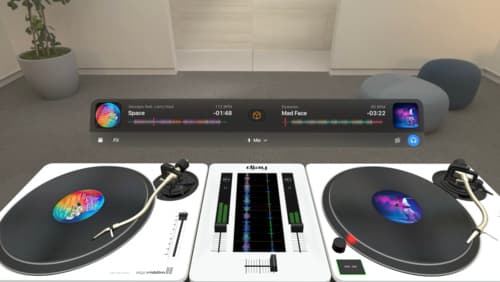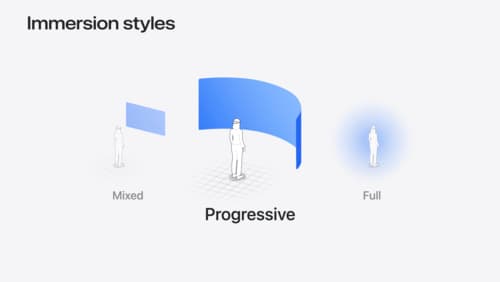How do volumetric containers work on visionOS?
Asked on 2024-08-01
1 search
Volumetric containers on visionOS are designed to enhance the spatial computing experience by allowing apps to take advantage of the third dimension. Here are some key features and functionalities:
-
Volume Resizing: Users can resize volumes themselves, similar to resizing a window. This allows the volume size to be adjusted to fit the content appropriately (Platforms State of the Union).
-
Fixed or Dynamic Scale: Developers can choose whether a volume has a fixed or dynamic scale. A fixed scale means the volume remains the same size regardless of its distance from the user, enhancing its presence in the world. A dynamic scale means the volume changes size as it moves closer or further away, similar to real-world objects (Dive deep into volumes and immersive spaces).
-
Ornaments and Chrome: Ornaments can be affixed to volumes for additional controls or information. These can dynamically move to face the user as they walk around, providing a more interactive experience (Platforms State of the Union).
-
Baseplate: A baseplate appears automatically when looked at, highlighting the bottom edges of the volume. This helps users understand the boundaries of the volume. The baseplate can be disabled if the content already fills the volume's bounds (Dive deep into volumes and immersive spaces).
-
World Alignment: Volumes can be set to remain gravity-aligned (parallel to the floor) or tilt as they are raised. This adaptive tilting behavior ensures the content remains usable even from different viewing angles (Dive deep into volumes and immersive spaces).
-
Scene Types: VisionOS supports three scene types: windows, volumes, and immersive spaces. Volumes are used for rich, immersive 3D content, allowing apps to create unique and exciting experiences that blend with the real world (Dive deep into volumes and immersive spaces).
These features collectively enable developers to create more engaging and interactive volumetric apps on visionOS, enhancing the overall user experience.

Design interactive experiences for visionOS
Learn how you can design a compelling interactive narrative experience for Apple Vision Pro from the designers of Encounter Dinosaurs. Discover how these types of experiences differ from existing apps, media, and games, and explore how to design narratives that bring audiences into new worlds. Find out how you can create stories that adapt to any space and size, provide multiple levels of interaction to make them accessible to all, and use animation, spatial audio, and custom gestures to further immerse people in your experience.

Design great visionOS apps
Find out how to create compelling spatial computing apps by embracing immersion, designing for eyes and hands, and taking advantage of depth, scale, and space. We’ll share several examples of great visionOS apps and explore how their designers approached creating new experiences for the platform.

Dive deep into volumes and immersive spaces
Discover powerful new ways to customize volumes and immersive spaces in visionOS. Learn to fine-tune how volumes resize and respond to people moving around them. Make volumes and immersive spaces interact through the power of coordinate conversions. Find out how to make your app react when people adjust immersion with the Digital Crown, and use a surrounding effect to dynamically customize the passthrough tint in your immersive space experience.
